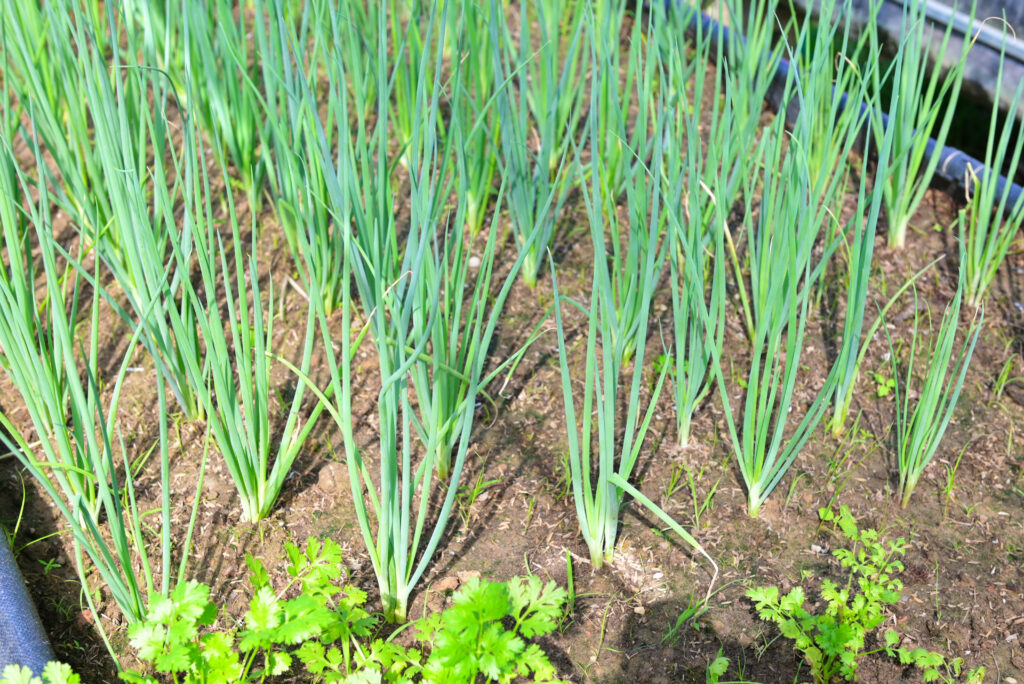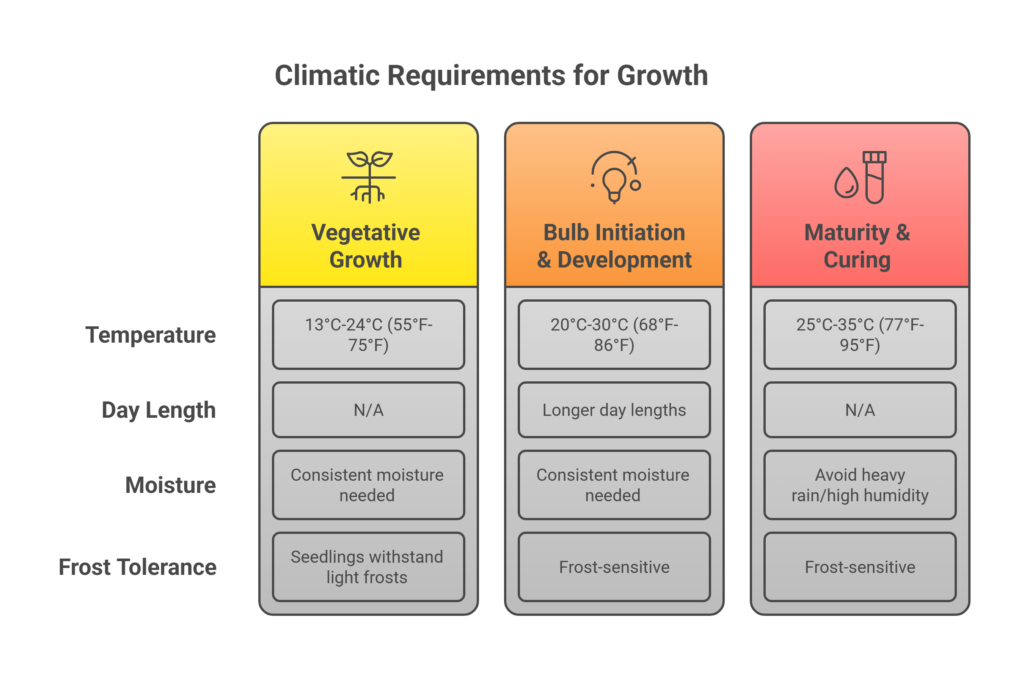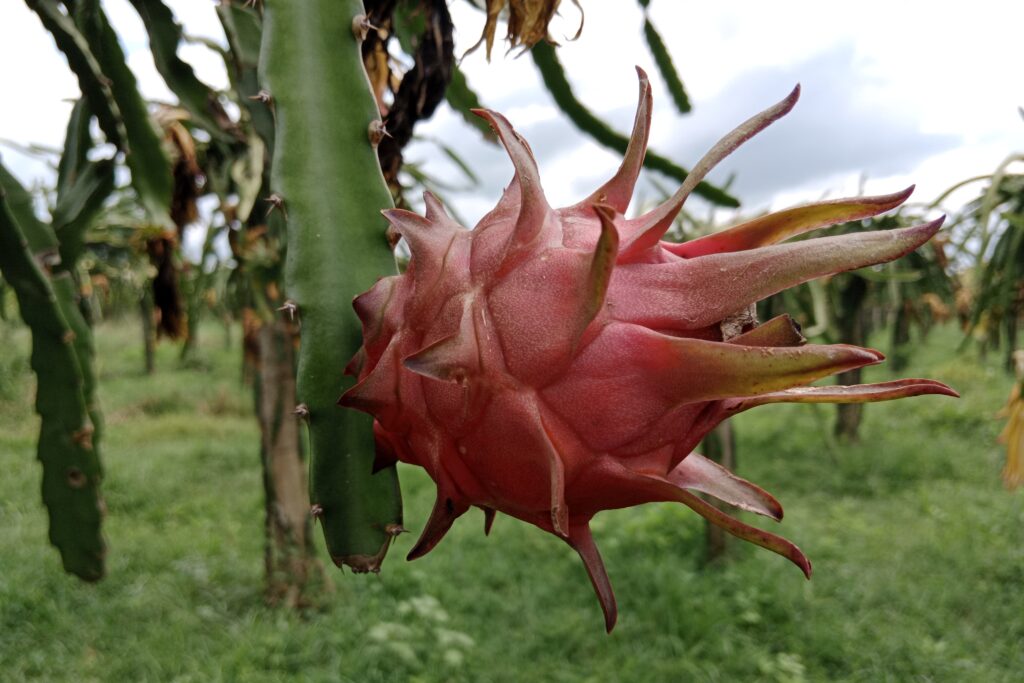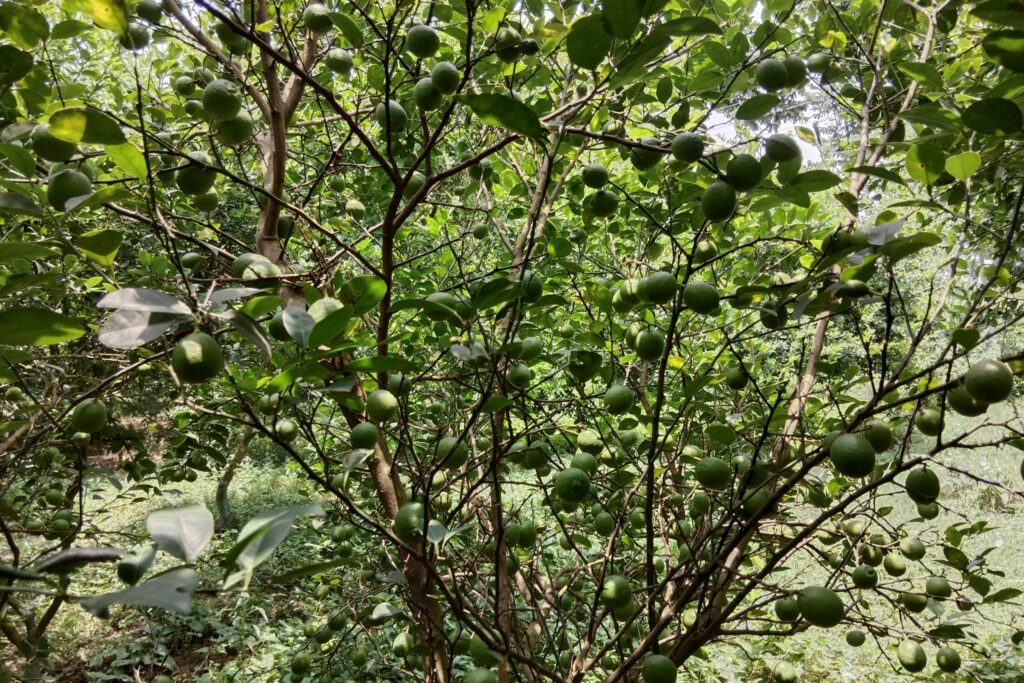Onion Farming
Onion farming can be a highly profitable agricultural venture when conducted in suitable locations with favorable conditions. A detailed profit analysis reveals that onion farming yields a gross profit of NRs. 133,000 per acre. This figure is derived by subtracting the total production cost, which amounts to NRs. 47,000, from the total income generated, estimated at NRs. 180,000 per acre.

Profitability is further emphasized by a profit margin of 73.89%, indicating that the profit constitutes a significant proportion of the total income. Additionally, the exceptional Return on Investment (ROI) of 283.0% highlights the efficiency of the investment, showing that every rupee spent on production yields nearly threefold in profits. This profitability, coupled with improved onion farming practices and strategic location selection, makes onion farming a lucrative endeavor. Onion farming profit per acre underline the economic viability and potential for growth in this agricultural sector.
Land Preparation
The process begins with deep plowing (20-25 cm) using a moldboard plow to loosen the subsoil, enhance aeration, and incorporate previous crop residues or organic matter. This is followed by 2-4 cross harrowings or rotavations to break down large clods and level the field, with planking or leveling after each harrowing to crush remaining clods and achieve a uniform surface. Finally, raised beds (10-15 cm high, 1-1.2 m wide) with furrows in between are formed to ensure proper drainage, prevent bulb rot, and facilitate field operations, though flat beds may be used in very well-drained sandy soils.
Soil Type
For optimal onion cultivation, the ideal soil type is a well-drained, deep, and fertile loam—such as sandy loam, silt loam, or clay loam—possessing good water-holding capacity and aeration. Soil pH is critical, with an optimal range of 6.0 to 7.5 (slightly acidic to neutral); soils below pH 5.5 are too acidic and require liming, while soils above pH 7.8 become alkaline, decreasing nutrient availability, especially for micronutrients. Conversely, onions are unsuitable for heavy clay soils (due to poor drainage and compaction), very sandy soils (due to low water and nutrient retention), and saline, sodic, or waterlogged soils.
Climatic Requirements
Ideal conditions for growth include cool to moderate temperatures, with vegetative growth thriving at 13°C-24°C (55°F-75°F), and bulb initiation and development requiring longer day lengths combined with warmer temperatures of 20°C-30°C (68°F-86°F), varying by cultivar (short-day, intermediate-day, long-day). Maturity and curing are best achieved under warm, dry weather at 25°C-35°C (77°F-95°F).

Day length is a critical trigger for bulb formation, making it essential to select cultivars suited to the planting latitude. Consistent moisture, with 350-500 mm (14-20 inches) of evenly distributed water during the growing season, is crucial, particularly during bulb enlargement, though heavy rain or high humidity near harvest can lead to diseases. While seedlings can withstand light frosts, mature bulbs are frost-sensitive, with hard frosts potentially causing significant damage.
Major Cultivars
| Classification Type | Category | Key Characteristics | Suitable Regions | Examples of Cultivars |
| By Day Length | Short-Day | Bulb formation requires 10-12 hours of daylight | Lower latitudes (Southern US, India, Egypt) | Granex types (Vidalia), Red Creole, Texas Early Grano |
| Intermediate-Day | Bulb formation requires 12-14 hours of daylight | Moderate latitudes | Candy, Cabernet, Sierra Blanca | |
| Long-Day | Bulb formation requires 14-16 hours of daylight | Higher latitudes (Northern US, Canada, Europe) | Walla Walla Sweet, Patterson, Red Zeppelin, Sterling | |
| By Color/Type | Yellow/Brown | Most common storage types | – | Copra, Patterson, Talon |
| Red | Primarily for fresh market | – | Red Wing, Red Zeppelin | |
| White | Often used for processing/dehydrating | – | White Grano, Sterling | |
| Sweet | Low pungency; Note: Often overlap with Short/Long-Day types | – |
Seed Rate
A seed rate of 4-5 kg is sufficient to raise the seedlings required for planting one acre of land. To protect against diseases, seeds should undergo treatment: first, treat with Thiram@2 gm/kg of seed combined with Benomyl 50WP@1 gm/liter of water, which effectively controls damping off and smut; following this chemical treatment, apply the bioagent Trichoderma viride@2 gm/kg of seed, which helps reduce early seedling diseases and soil-borne inoculum.
Nursery Management
Mid-October to mid-November is the best time of year to raise a nursery. Establish the nursery by preparing beds that are no wider than one meter, adding farmyard manure or well-decomposed compost (20 kg/m2), and fertilizing with DAP or TSP (20 g/m²). Make rows 15 cm apart, plant seeds thinly in furrows 1 cm deep, lightly cover with dirt, and mulch. In most cases, germination takes 7–10 days. Irrigate the seedbed frequently, remove the mulch as soon as the seedlings appear, offer a raised cover, and take proactive measures to eliminate diseases, weeds, and pests for efficient nursery maintenance.
Planting
Seedlings are ready for transplanting 6-8 weeks after sowing or when they have developed 3-5 well-formed leaves and their base has reached the thickness of a pencil.Seedlings are ready for transplanting 6-8 weeks after sowing or when they have developed 3-5 well-formed leaves and their base has reached the thickness of a pencil.
a). Planting Season
Planting time varies significantly by climate zone: in temperate regions, plant sets or transplants in early spring as soon as the soil is workable, while in tropical and subtropical climates, planting should occur during the cooler, drier season (e.g., October-November in India), crucially avoiding periods of heavy monsoon rains during the critical bulbing and harvest stages.
b). Spacing
To optimize onion production, use a transplant spacing configuration of 30 cm between rows and 8 cm between individual plants.
d). Planting Method
The most common commercial method uses nursery-raised transplants: seedlings aged 6-8 weeks with stems pencil-thick are carefully transplanted into the field at precise spacing, ensuring uniform stands and enabling an earlier harvest, though roots must be handled gently to avoid damage. In contrast, sets—small dormant bulbs planted directly—are less common commercially due to issues with yield variability and higher bolting risk but offer simplicity making them well-suited for home gardens.
e). Number of Plants per Acre:
The plant density varies significantly depending on the spacing and the target bulb size, with a typical range of approximately 168,625 plants per acre based on the specified spacing parameters.
Irrigation
Onion irrigation requires careful management throughout critical growth stages: germination/seedling establishment, bulb initiation, and bulb enlargement. During early establishment, frequent, light irrigations are essential. As plants mature, shift to deeper but less frequent watering to encourage root growth.
However, significantly reduce irrigation during the final 2-3 weeks before harvest (bulb maturity/curing) to prevent rot and improve storage quality; specifically, withhold water entirely for the last 10 days. Common methods include furrow irrigation (most common on beds), highly efficient drip irrigation (which reduces leaf wetness and disease), and sprinklers (though these can promote disease if foliage stays wet).
Crucially, avoid both waterlogging (which causes root rot) and severe drought stress during the bulbing phase, as this reduces bulb size and yield while increasing pungency. A typical schedule involves irrigating at planting, on the third day, and then weekly intervals until the final pre-harvest dry-down period.
Fertilizer and Manure
| Aspect | Details/Recommendation | Importance/Timing/Notes |
| Soil Testing | Essential | Determines exact nutrient requirements. |
| Organic Matter | 15-20 tonnes/acre well-decomposed FYM or compost | Incorporate during land preparation to improve soil structure & provide slow-release nutrients. |
| Major Nutrients | ||
| Nitrogen (N) | 100-150 kg/acre total | Crucial for leaf growth & bulb size. Split application: 1/3 basal (planting), 1/3 at 30 days, 1/3 at 45-60 days. Avoid excess late (delays maturity, harms storage). |
| Phosphorus (P) | 50-80 kg P₂O₅/acre | Important for root development & early growth. Apply mostly as basal dose. |
| Potassium (K) | 80-120 kg K₂O/acre | Vital for bulb quality, size, firmness & storage life. Split application: basal & bulb initiation. |
| Micronutrients | Sulfur (S), Boron (B), Zinc (Zn) | S crucial for flavor/pungency. B deficiency causes internal breakdown. Zn may be needed. Apply based on soil test. |
| Application | Band placement near roots | More efficient than broadcasting. |
Weed Control
Effective weed control is crucial during the first 4-6 weeks after planting, as onions are poor competitors. Strategies include cultural methods like maintaining a clean seedbed, proper spacing, and using straw mulch to suppress weeds and conserve moisture; mechanical approaches such as shallow hoeing or cultivation (with caution near shallow roots) and hand weeding; and chemical methods involving pre-emergent herbicides (e.g., pendimethalin) to prevent weed emergence, and post-emergent selective herbicides (e.g., sethoxydim, quizalofop) for grassy weeds, with careful application of broadleaf herbicides due to onion sensitivity. Always adhere to label instructions for herbicide use.
Pest and Disease Management
Common Pests
a). Thrips
An infestation of thrips, which is most common in arid climates, can result in significant output losses of up to 50% if left unchecked. The distinctive signs of these pests include leaf curling, which causes the leaves to become cup-shaped or curve upwards, as a result of sucking sap from the plant. Blue sticky traps should be placed 6–8 per acre to track severity. If an infestation is found in the field, use sprays like Prophenophos (10 ml per 10 liters of water) or Fipronil (Regenta) (30 ml per 15 liters of water), repeating applications every 8 to 10 days.

b). Onion Maggot
Infestations typically observed during January-February cause significant damage by feeding on roots, resulting in browning leaves and a watery, decayed base of the plant. If infestation occurs, apply Carbaryl @ 1 liter or Phorate @ 4 kg directly to the soil followed by light irrigation, or apply Chlorpyriphos @ 2 liters per acre mixed with irrigation water or sand.
Common Diseases
a). Damping-off
Damping-off is a common onion disease where seedlings collapse and die; control requires fungicide seed treatment, ensuring good drainage, and avoiding overwatering.

b). Downy Mildew
Downy mildew is a destructive fungal disease characterized by the appearance of purple mold on leaves and subsequent leaf dieback, often thriving in cool, wet conditions. Effective management involves an integrated approach, including the use of resistant onion varieties, application of appropriate fungicides such as mancozeb, chlorothalonil, or those containing metalaxyl, and implementing cultural practices that promote good airflow around plants to reduce humidity. Avoiding overhead irrigation, which can create favorable conditions for spore dispersal and infection, is also crucial in controlling the spread of this disease.
c). Purple Blotch
Purple blotch causes yield losses up to 70%, characterized by deep purple lesions on leaves and yellow streaks that turn brown and extend along the leaf blade. To control these diseases, apply a spray of Propineb 70% WP @ 350 grams per acre diluted in 150 liters of water, repeating the application twice at 10-day intervals.
d). Botrytis Leaf Blight/Neck Rot
Botrytis leaf blight, also known as neck rot, manifests gray mold on onion foliage and can lead to significant storage losses due to rot. Effective control measures include applying fungicide sprays during the late growing season to reduce disease incidence, ensuring thorough curing of onions post-harvest to minimize moisture levels that favor fungal growth, and maintaining proper storage conditions with adequate ventilation and low humidity to prevent the disease from progressing.
e). Bacterial Soft Rot
Bacterial soft rot is a destructive disease-causing onion bulb to decay into a watery mush; effective control requires careful handling to avoid bruising, ensuring proper curing and optimal storage conditions, and managing insect populations that can spread the infection.
f). Fusarium Basal Rot
A soil-borne disease called Fusarium basal rot causes rot at the root and basal plate of onions as well as yellowing of the foliage. Planting resistant onion varieties, rotating crops with non-host crops for at least four years to minimize pathogen accumulation in the soil and improving soil health overall with organic amendments and balanced nutrient management are all effective control methods that make the environment less conducive to the pathogen.
Harvesting
Onions should be harvested when bulbs reach mature size and tops (necks) begin to soften, collapse, and yellow, typically indicated by 50-80% of tops falling over – avoid waiting for 100% top fall, especially for long-storage types which require tight necks. Key maturity indicators include papery skin formation, characteristic bulb color development, and neck softening.
Carefully lift bulbs using a fork or undercutter blade when the soil is dry to minimize bruising and damage. Curing is essential for storage: allow bulbs to dry for 2-3 weeks either in the field (with tops covering bulbs for sun protection) or in well-ventilated barns/sheds, until necks are tight and dry, outer scales are paper-dry and rustle, and roots are shriveled. After curing, cut tops 2.5-5 cm (1-2 inches) above the bulb (though bulbs can alternatively be stored with tops for braiding) and remove roots. Finally, sort bulbs by size and discard any that are damaged or diseased.
Cost of Investment Per Acre: Onion Farming
| S.N. | Categories | Cost (NRs) |
| 1 | Land Preparation (plowing, levelling) | 15,000 |
| 2 | Seed rate per acre | 2,000 |
| 3 | Labor Costs (transplanting) | 3,000 |
| 4 | Fertilizers and Manure | 8,000 |
| 5 | Irrigation | 5,000 |
| 6 | Weed Control (pre & post-emergence) | 2,000 |
| 7 | Pest & Disease Control | 5,000 |
| 8 | Harvesting | 2,000 |
| 9 | Miscellaneous Costs | 5,000 |
| Total Cost | 47,000 |
Income from 1 Acre: Onion Farming
| Particulars | Estimated Yield (kg) | Market Price (NRs/kg) | Total Income (NRs) |
| Onion yield | 6,000 | 30 | 180,000 |
Analysis of Onion Farming Profit Per Acre
The profit analysis for onion farming per acre shows a gross profit of NRs. 133,000, calculated by subtracting the total production cost (NRs. 47,000) from the total income (NRs. 180,000). This translates to a profit margin of 73.89% (profit as a percentage of income) and an exceptional Return on Investment (ROI) of 283.0% (profit relative to costs). On a per-kilogram basis, the production cost is NRs. 7.83 (total cost divided by the 6,000 kg yield), resulting in a profit of NRs. 22.17 per kg when the market price of NRs. 30/kg is considered.



Pingback: Leek Farming Profit Per Acre -